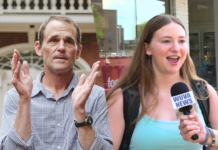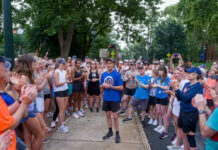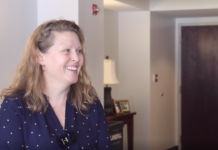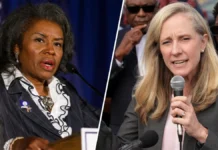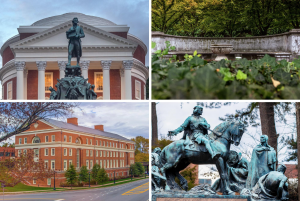
On Friday, the University of Virginia Board of Visitors announced their unanimous vote to implement new racial equity resolutions such as the removal of the Corner’s George Rogers Clark statue. Other changes include renaming the Curry School of Education and Human Development to the University of Virginia School of Education and Human Development, contextualizing the statue of Thomas Jefferson that stands on the north side of the Rotunda, and rededicating the on-Grounds Confederate monument known as the “Whispering Wall.”
The Board approved these resolutions — controversial among some community members who now engage in social media debate — at the recommendation of the Racial Equity Task Force formed by University President Jim Ryan in June. Prior University efforts to embrace the cry for racial justice heard around the country included the construction of the Memorial to Enslaved Laborers, the dedication of a new undergraduate dormitory to civil rights leader Julian Bond, and the renaming of buildings on Grounds that previously honored segregationist William H. Ruffner and eugenicist Paul Brandon Barringer. Grappling with similar issues, Albemarle County recently removed a statue depicting a Confederate soldier from Court Square.
Ryan explained his support for Friday’s announced renaming and landscaping resolutions.
“My view, and I know this is shared by my entire leadership team, is that this moment offers us a unique opportunity to take action that will leave a lasting and positive impact on the university we all love,” Ryan said. “Actions that will make this place more clearly and obviously welcoming to all, and where all have an opportunity to thrive.”
The Clark statue, erected in 1921 and located near the intersection of University and Jefferson Park Avenues, recently inspired indigenous-led protests. Activists said that the monument glorified violence against tribes and celebrated Clark as a “conqueror” of Native Americans. The sculpture depicts Clark, backed by armed comrades, on horseback preparing to attack a group of fearful-looking Native American tribespeople. The Board of Visitors expressed its intention to work with indigenous leaders to determine a suitable place off-Grounds for the monument.
Anthony Lopez, a Crow Creek Sioux tribal member and University alumnus, told The Daily Progress his thoughts on the monument.
“You can’t find a trace of Native American history on the Grounds other than that statue,” Lopez said. “We’re not advocating vandalism or tearing it down. Maybe they can give it away. The National Holocaust Museum has displays involving genocide in other countries, and this would be appropriate.”
As for the Jefferson sculpture, the Board plans to “contextualize” it by adding more information about the Founding Father’s complicated legacy.
“The Board’s resolution acknowledged Jefferson’s contributions to the University and the nation, but also pointed out that he owned slaves and used slave labor at UVA, in direct contradiction to the ideals of liberty and equality he professed,” the University announcement stated in an explanation of the Task Force recommendation.
Alongside its monument-related resolutions, the Board announced that the University’s School of Education and Human Development will drop the name of Confederate leader J.L.M. Curry. While the University first considered renaming the Curry School in 2018, even soliciting input from the public and alumni on the possibility, this week marked the Board’s first formal commitment to the change.
Esteemed University historian and Director of the Nau Civil War Center Gary Gallagher provided his view of Curry.
“To reduce a complex history to a single sentence, Curry showed real vision in advocating free public education for the South’s Black children, but an overclouding blindness in refusing to recognize African Americans as having the same potentialities and capacities as whites,” Gallagher said.
While some of Friday’s announced changes are straightforward, the future of the on-Grounds “Whispering Wall” remains somewhat unclear. Formally titled the Hume Memorial Wall, it will either be rededicated or removed depending on the determination of the University Committee on Names. The statue honors Confederate soldier Frank Hume, who had no firsthand connection to Virginia himself, but had two sons who attended the University and erected the memorial in their father’s honor.
Ryan acknowledged the difficulties involved in enacting the Racial Equity Task Force measures.
“There is plenty of work ahead, but I feel like this [Task Force] provides us with a decent roadmap,” Ryan said. “This will take effort from all of us.”







